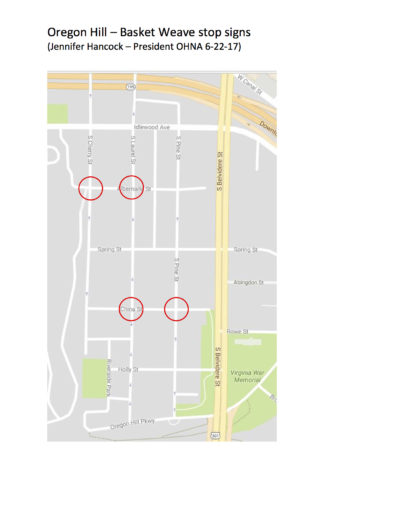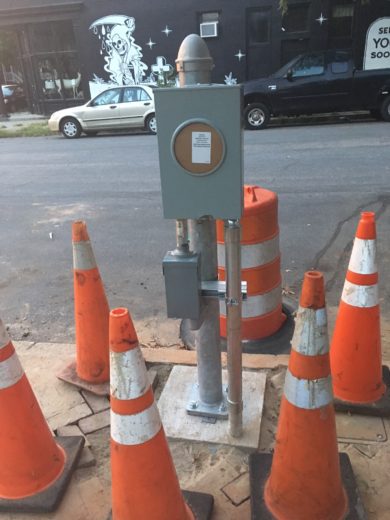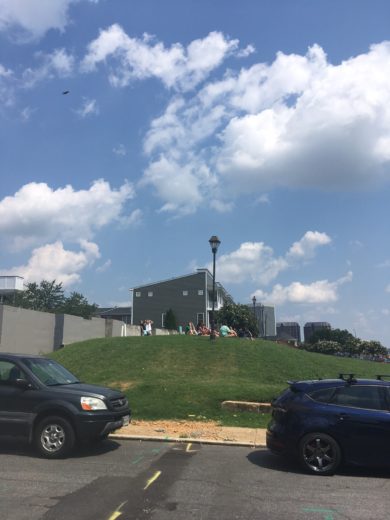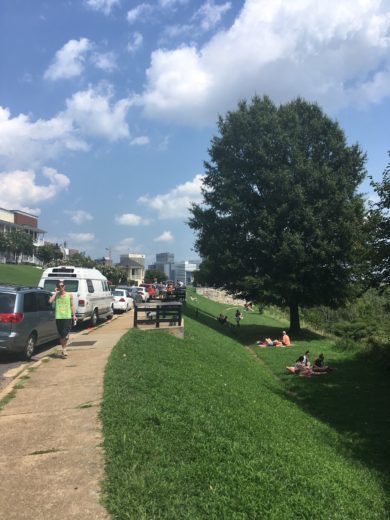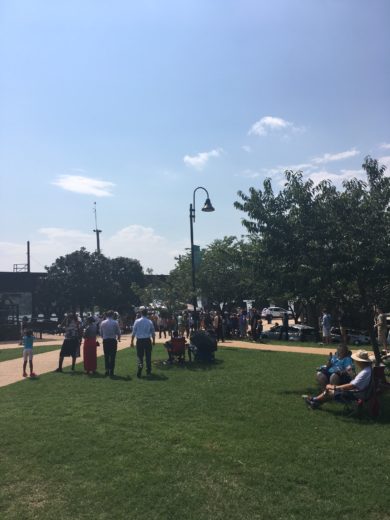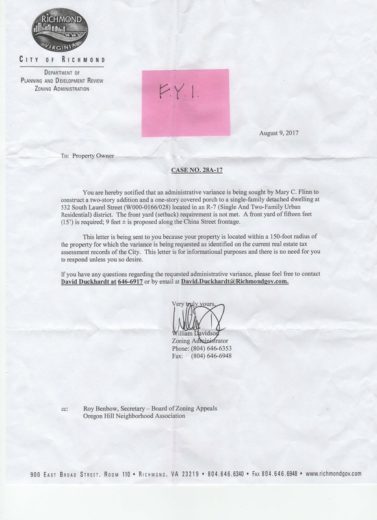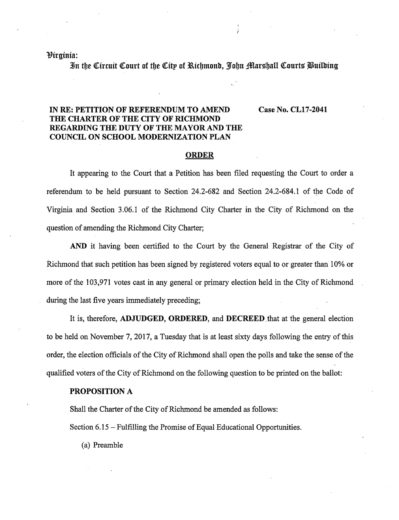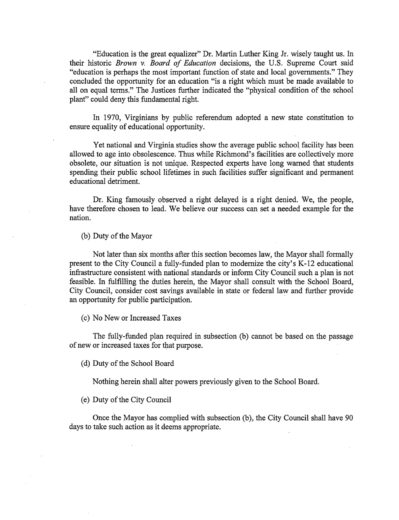This past summer there was a lot of discussion about Oregon Hill’s traffic flow. The Idlewood roundabout is still coming, and more construction near Monroe Park added fuel to the fire, but the real sparks have been several highly visible accidents at key intersections in the neighborhood. A few neighbors have had their corner properties hit multiple times by vehicles over the years. Thankfully, somehow, there has not been any related fatalities.
The Oregon Hill Neighborhood Association originally, as of a few years ago, voted and asked for a few additional stop signs at these key intersections, namely Spring and Laurel, and Spring and Pine, in order to create what are essentially all way stops. City traffic engineers have rejected them (though other neighborhoods have been able to prevail in their requests). At one point engineers came back with a small roundabout proposal, but neighbors voted that down, in part because of concerns about parking impacts.
Over the last 6 to 8 months, the conversation changed, along with the construction scene, and more elaborate proposals have been brought forward for overall traffic flow and with what is called ‘basketweaving‘.
Jokes aside, the Oregon Hill Neighborhood Association did seriously consider options and ultimately came up its own ‘custom’ proposal.
While nothing has been decided or implemented yet, here it is:
The red circles are where existing stop signs would be changed so that they are ‘flipped’, directing traffic to stop in the opposite directions from the current situations. For example, currently, if you are going north on Pine Street on the 500 block, you do not have to stop, but people approaching on Spring Street do have to stop. In the new scenario, if you were going north on Pine Street on the 500 block, you would stop at the intersection with Spring, and people going west or east on Spring would not have to stop.
